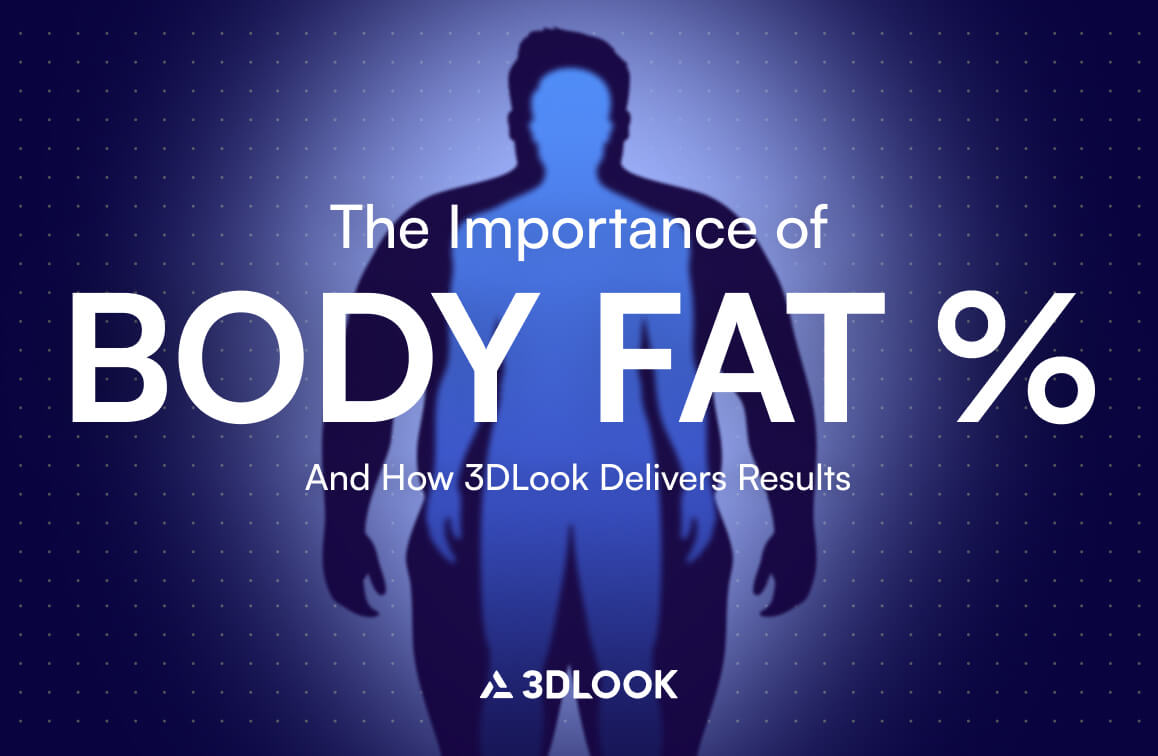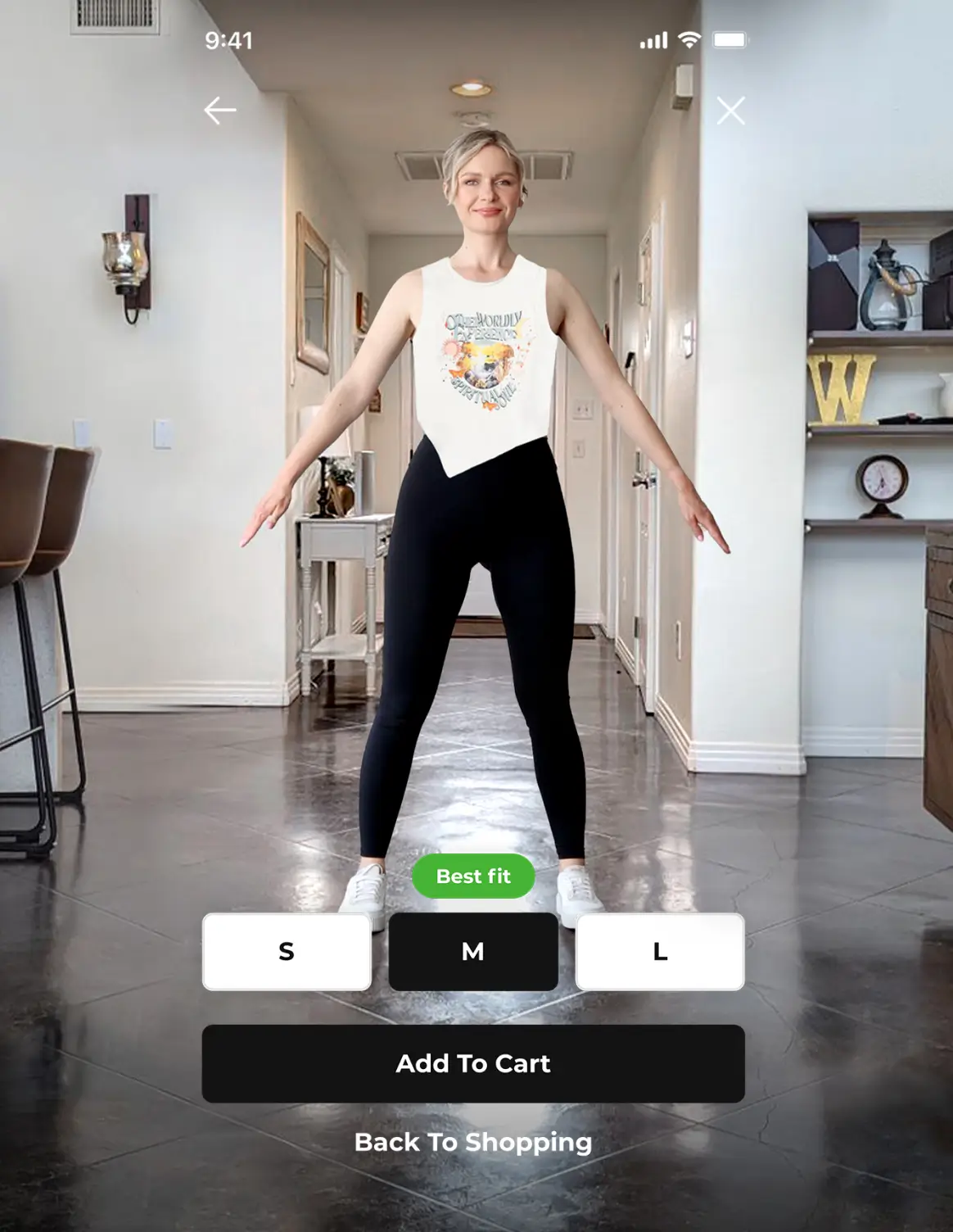As a fitness professional, you’ve likely heard the frustration in clients’ voices: “I’m working out five times a week, but the scale isn’t moving.” This disconnect between effort and perceived progress is a critical issue—recent industry research shows that nearly 50% of new gym members quit within six months, with the average retention rate for health clubs is approximately 71.4%.
The solution isn’t motivational speeches or pushing harder workouts—it’s education backed by precise measurement technology. Your clients need to understand that body fat percentage provides the missing context that transforms frustrating scale readings into meaningful health insights.
The Hidden Problem with Traditional Measurements
When clients step on a scale, they see one number that represents their total body weight: bones, muscle, blood, organs, and fat combined. What they can’t see is the story behind that number.
Consider three hypothetical clients, all weighing 150 pounds. Client A has 28% body fat with low muscle mass, representing the “skinny fat” phenotype that faces hidden health risks despite appearing normal by weight standards. Client B maintains 22% body fat with balanced composition, while Client C carries only 15% body fat with high muscle mass from athletic training. Using weight alone, you might assume these clients have similar health profiles and fitness needs, but they require completely different approaches to training and nutrition.
Body Mass Index (BMI) creates similar confusion. While useful for population-level health assessments, it can’t distinguish between muscle and fat mass. This means muscular clients get labeled as “overweight” or “obese” despite excellent health, while “skinny fat” clients receive “healthy weight” classifications while carrying hidden health risks. According to recent research published in Mayo Clinic Proceedings, BMI “may be misleading for people who are elderly, have a lot of muscle or are pregnant,” creating significant impacts on program design and client motivation.
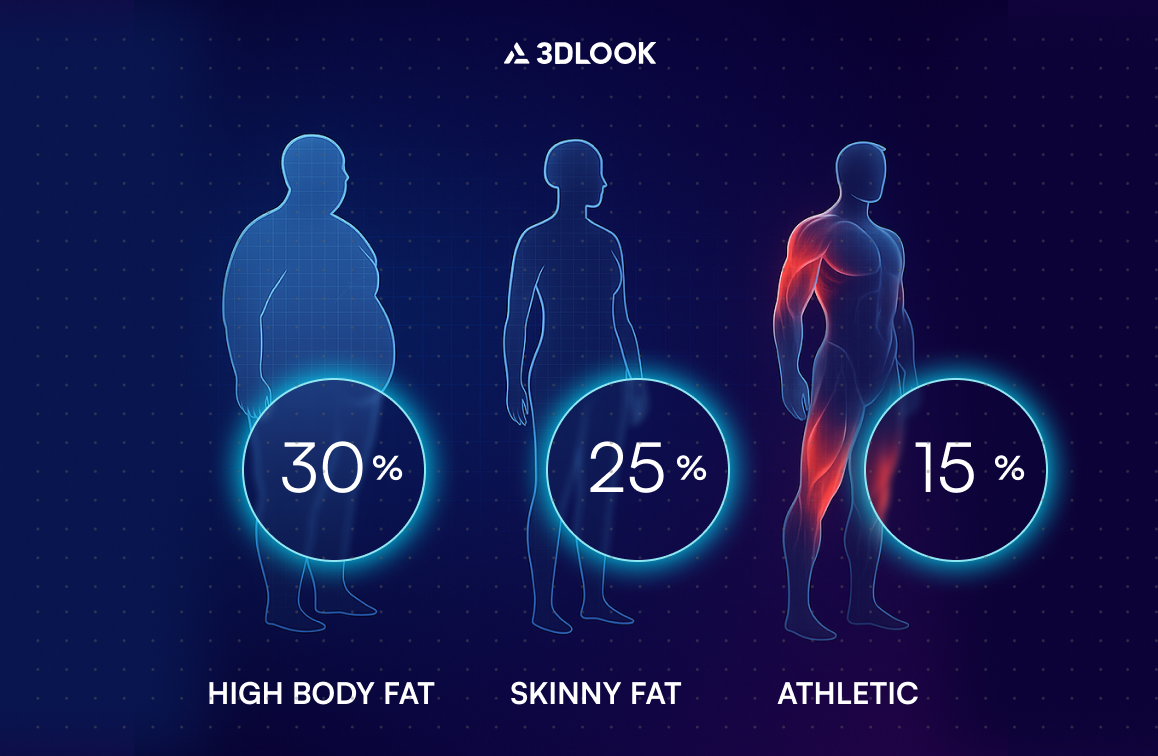
Why Body Fat Percentage Drives Client Success
Understanding body fat percentage transforms how you design training programs. High body fat clients above 25% for women or 20% for men benefit from metabolic training and caloric deficit approaches. Accurate measurements help track fat loss while preserving existing muscle mass, showing progress even when scale weight plateaus
“Skinny fat” clients with normal weight but high body fat percentages need strength training with adequate nutrition to build muscle mass while maintaining or slightly reducing fat.
Athletic clients with low body fat and high muscle mass focus on performance optimization and track subtle changes that other methods can’t detect. This objective data justifies specialized training approaches and premium pricing for advanced programming.
Setting realistic expectations becomes crucial when clients understand body fat percentage ranges. Healthy ranges span 18-28% for women and 10-20% for men, with realistic fat loss occurring at 1-2% body fat reduction per month with consistent effort. New muscle tissue increases metabolic rate and changes body shape even without significant weight loss, helping clients appreciate non-scale victories that keep them motivated through plateaus.
Understanding Body Fat Measurement Options
As a fitness professional, you need to understand the full spectrum of body composition assessment methods to choose the right approach for each client and situation. Each method has distinct advantages and limitations that affect accuracy, cost, and practical application.
Simple measurement techniques provide valuable starting points for body composition assessment. Waist-to-height ratio requires only a tape measure, dividing waist circumference by height to identify health risks when ratios exceed 0.5. This method effectively tracks abdominal fat changes over time and serves as an excellent screening tool during initial consultations. Waist-to-hip ratio helps identify “apple” versus “pear” body shapes, with high-risk thresholds above 0.90 for men and 0.85 for women, revealing fat distribution patterns that affect cardiovascular risk.
Consumer-level technology offers convenient options for regular monitoring. Smart scales using bioelectrical impedance analysis send electrical impulses through the body, measuring resistance differences between fat and muscle tissue. These devices range from $25-200 and excel at tracking trends over time when used consistently. However, hydration status significantly affects their accuracy, and they tend to be less reliable for athletic individuals with high muscle mass. The British Heart Foundation recommends ensuring proper hydration before use, as dehydration can lead to overestimation of body fat percentage.
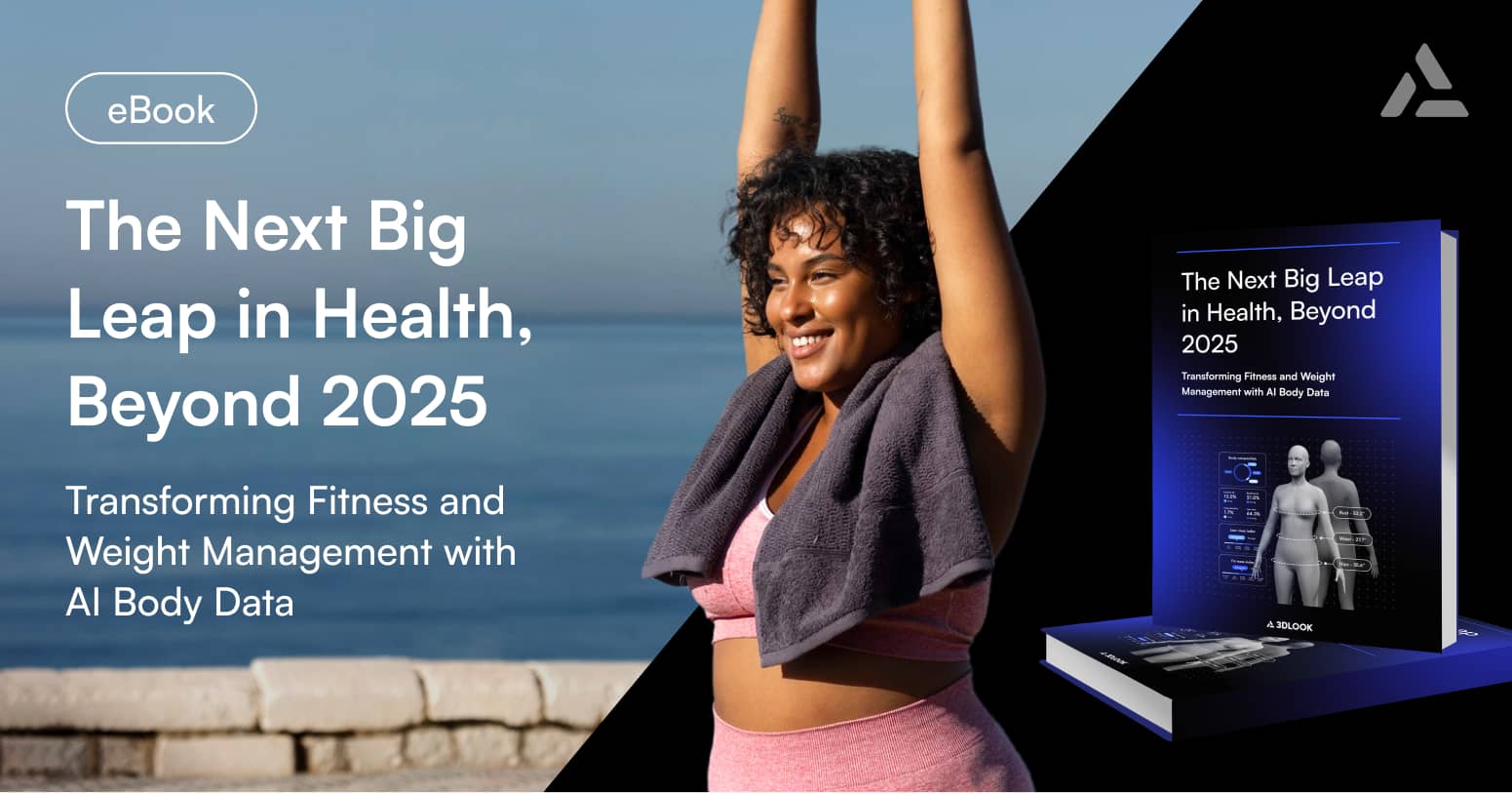
Discover how AI-powered body data is revolutionizing health, fitness, and weight management, setting a new standard for personalization and progress tracking.
Professional techniques provide higher accuracy for detailed assessment. Skinfold calipers, costing $10-50, measure subcutaneous fat thickness at specific body sites. While accuracy depends heavily on technician skill and consistency, experienced professionals can achieve reliable results for tracking changes over time. The limitation lies in measuring only subcutaneous fat while missing visceral adiposity.
DEXA scans represent the current gold standard for body composition analysis, providing comprehensive data on total body fat percentage, regional fat distribution, bone density, and muscle mass. With costs ranging from $100-300 per scan, DEXA offers unparalleled detail for baseline measurements and health assessments but may be impractical for regular progress tracking due to expense and facility requirements.
Hydrostatic weighing delivers extremely high accuracy when performed correctly, measuring body density through underwater weighing to calculate body composition. However, this method requires specialized equipment, can be uncomfortable for some clients, and is primarily available at universities and research facilities, limiting practical application in most fitness settings.
3DLook’s FitXpress technology represents a breakthrough in accessibility and accuracy, delivering 96-97% measurement precision through AI-powered smartphone scanning. This approach combines the convenience of consumer technology with the accuracy of professional methods, completing comprehensive body assessments in under 30 seconds from just two smartphone photos without requiring specialized equipment or technical expertise.
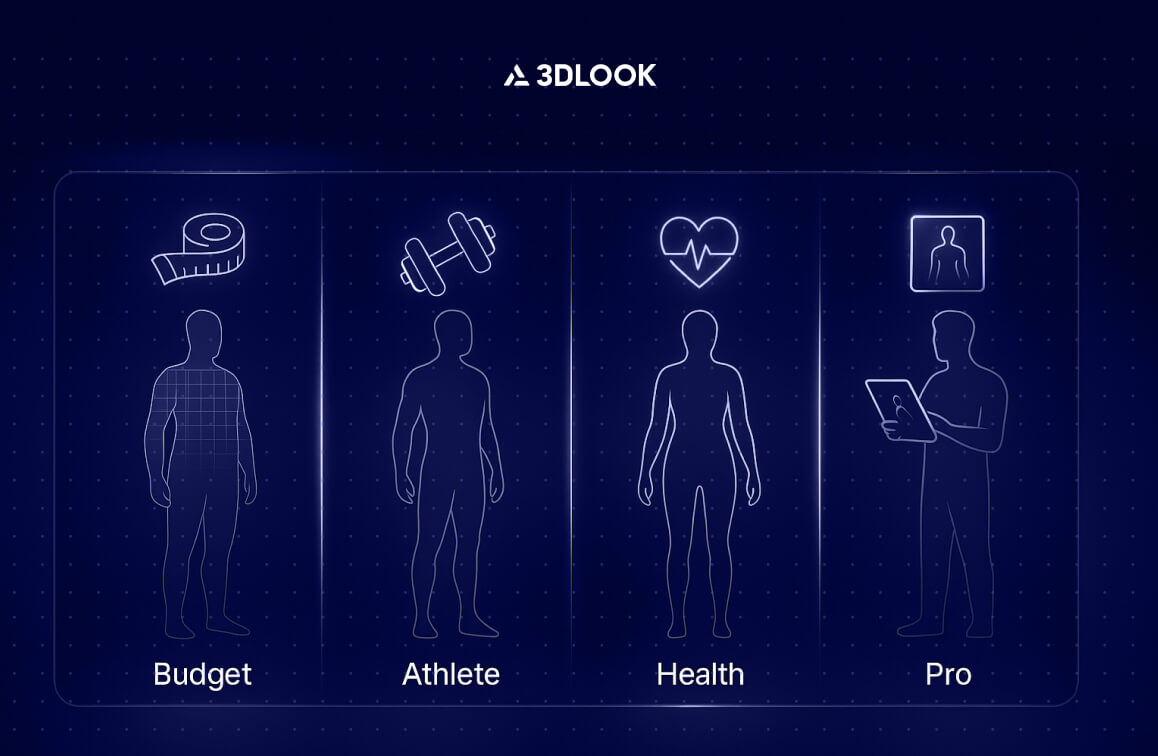
Choosing the Right Measurement Method for Your Clients
Different clients require different approaches to body composition assessment based on their goals, budget, and commitment level. Understanding these distinctions helps you provide appropriate recommendations that build trust and deliver results.
Budget-conscious clients benefit from simple measurement techniques combined with progress photos to track changes over time. Waist measurements provide valuable health risk indicators, while affordable smart scales can support home monitoring when clients understand their limitations. The focus should be on trends and lifestyle changes rather than absolute precision, helping clients develop sustainable habits without financial barriers.
Serious athletes require detailed tracking of muscle mass and fat distribution to optimize performance and training adaptations. Professional-grade measurements such as DEXA scans or advanced 3D scanning provide the precision needed to detect subtle changes that could impact athletic performance. These clients typically justify higher assessment costs through the competitive advantages gained from optimized body composition.
Health-focused clients benefit most from emphasizing health markers over aesthetic goals, using body fat percentage to assess disease risk factors and connecting improvements to real health outcomes. This approach builds long-term relationships by positioning fitness professionals as health partners rather than appearance-focused trainers.
For fitness professionals building their practice, the choice of measurement technology significantly impacts service offerings and client relationships.
Final Thoughts
The global fitness industry, valued at $124.7 billion in 2024 and projected to reach $202.78 billion by 2030, increasingly embraces technology-driven solutions that provide comprehensive health insights beyond traditional measurements. Recent market research indicates that 46% of millennials want quantifiable data about their health, with 54% likely to purchase body-analyzing devices. Learn more about 3DLook’s solutions for fitness professionals and discover how smartphone-based 3D scanning can transform your client experience and business outcomes.
